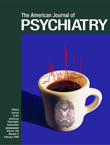In his eschatological comedy,
Love in the Ruins (1), Walker Percy arms his protagonist—the lapsed Catholic, lapsed psychiatrist Tom More—with a magical hand-held brain scanner. This “Qualitative Quantitative Ontological Lapsometer” measures the state of patients’ souls, particularly the tendency toward angelism, localized in Brodmann area 32. Such a device would go a long way toward integrating theology and biological psychiatry. In the meanwhile, what level of union is possible or desirable?
Dan Blazer is an elder of the Church of Christ, an evangelical denomination of two million souls intent on returning Christianity to its first-century roots. He is also a practicing psychiatrist and an academic, the J.P. Gibbons Professor of Psychiatry at Duke University School of Medicine. This combination of allegiances has become especially conflicted as Christian fundamentalism has turned political and anti-intellectual and as psychiatry has suffered its often-noted “loss of mind.”
In >Freud vs. God, Blazer reveals a nostalgia for the days when fundamentalism referred to a concern with community and the Biblical text and when psychiatry’s text was the life story of troubled individuals in their social surround. Even then, psychiatry and Christianity were at odds. Blazer is well aware that Freud dismissed religion as a group reaction formation, while evangelicals treated psychoanalysis as a competing and hostile orthodoxy.
In the heyday of Freudianism, however, psychiatry and religion did engage in what theologians call an “irenic” (as opposed to polemical) dialogue. The Catholic psychoanalyst Gregory Zilboorg credited the Catholic Church with an interest in aggression, ambivalence, and authenticity. Karl Menninger found commonality in concern over apathy and the renunciation of evil. From the other starting point, Paul Tillich and Richard and Reinhold Niebuhr found food for spiritual thought in psychoanalysis’ evocation of guilt, projection, repression, and the process of psychic self-examination.
This dialogue rarely resulted in an integration of praxis. (Blazer sets aside pastoral counseling, deeming it an overly safe, poorly defined variant of Rogerian psychotherapy.) But at least Christians and psychiatrists were intensively engaged. In recent years, psychiatry and Christianity have settled for what Blazer calls a “comfortable accommodation,” with each camp ceding a large territory to the other and neither addressing the social and existential alienation that characterizes the personal experience of modern life.
Blazer is a brave writer, unafraid to appear strange to his differing colleagues, frank and thorough in his critiques of the two disciplines to which he adheres. This overview is the book’s strong point, and it is strong indeed. However, as Blazer himself is aware, his attempts at integration are tentative.
Blazer ends the book with a vignette about a small-town attorney, Richard, who, Job-like, does good despite intimate stressors. At age 76, after suffering a heart attack, Richard enters into a depression that is refractory to the series of medications Blazer prescribes. Richard wonders why God is robbing him of his dignity. Believing his technical tools have failed him, Blazer reveals his own doubts to Richard. The doctor-patient relationship turns more collegial; Richard’s disability remains, although perhaps his religious doubts diminish.
I cannot speak to the challenges this case presents to theology, but as a medical history it strikes me as ordinary. Refractory depression is a not infrequent sequel of the illnesses of late life, and self-disclosure is a common, if controversial, tool of psychotherapy. As a stranger to Christian fundamentalism, I see no special need to treat Richard’s complaint with tools from outside psychiatry, if psychiatry’s tools include empathy with a patient’s religious concerns. It seems to me that here Blazer, too, succumbs to the medical model.
If psychiatry and religion are to resume their irenic dialogue, its focus is less likely to be clear-cut mental illness than minor mood disturbance—the free-floating anxiety that for psychoanalysts was pathognomonic of neurosis but that for Percy was divine stigma. As a reader and as a colleague, I wonder how Blazer understands, say, dysthymia or subsyndromal symptomatic depression. Judging by Freud vs. God, he addresses them as we psychiatrists have been taught to, with medication and psychotherapy. An unanswered question is whether psychiatry would be impoverished or enriched by encounters with a competing perspective—sufficiently deep, open, and thoughtful—that sees some instances of anxiety and depression as best approached through prayer or, on occasion, through being let alone.

